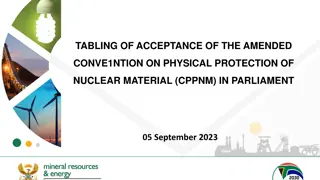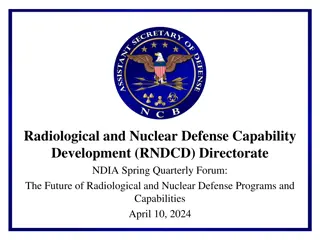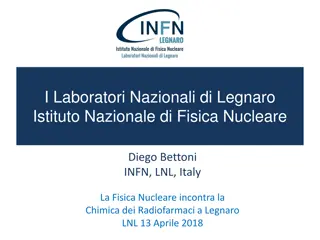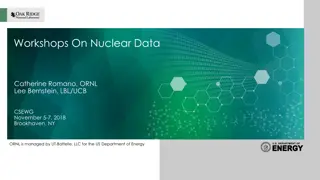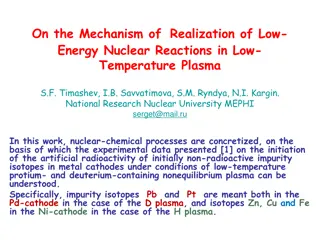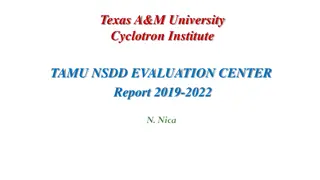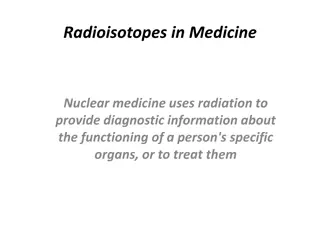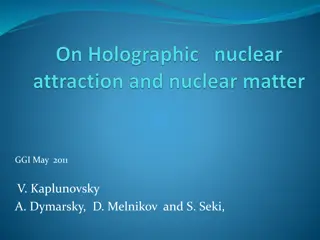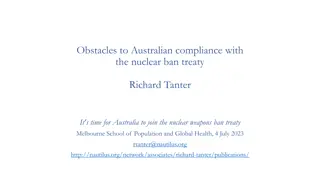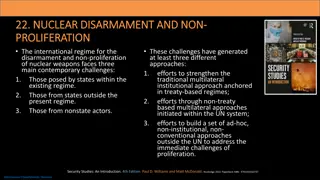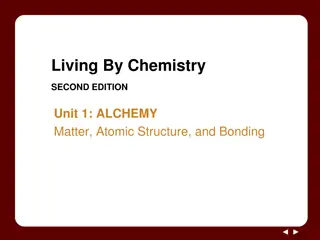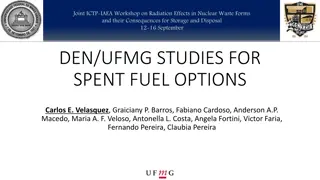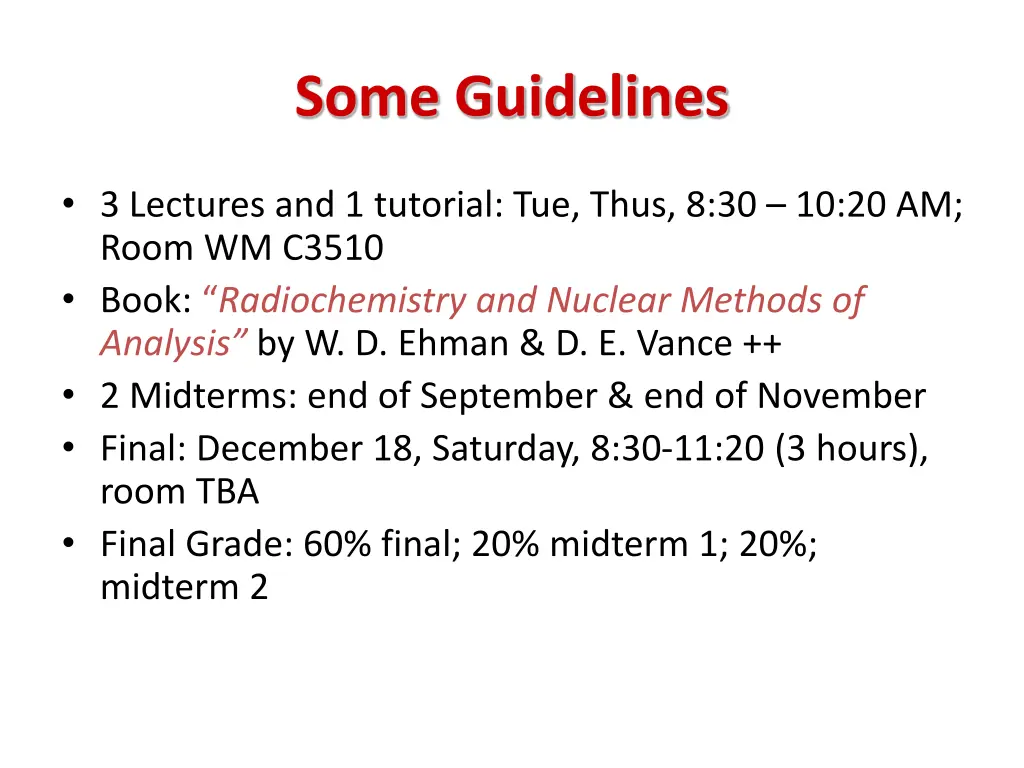
Exploring Radioactivity and Nuclear Science through Historical Discoveries
Delve into the fascinating world of radioactivity and nuclear science through the historical discoveries of pioneers like Henry Becquerel, Marie and Pierre Curie, and Wilhelm Röntgen. Discover the origins of radioactivity, its impact on chemistry and physics, and the revolutionary contributions that shaped the field. Join a comprehensive academic journey guided by insightful lectures, a dedicated instructor, and engaging assignments, leading towards a deeper understanding of radiochemistry and nuclear methods of analysis.
Download Presentation

Please find below an Image/Link to download the presentation.
The content on the website is provided AS IS for your information and personal use only. It may not be sold, licensed, or shared on other websites without obtaining consent from the author. If you encounter any issues during the download, it is possible that the publisher has removed the file from their server.
You are allowed to download the files provided on this website for personal or commercial use, subject to the condition that they are used lawfully. All files are the property of their respective owners.
The content on the website is provided AS IS for your information and personal use only. It may not be sold, licensed, or shared on other websites without obtaining consent from the author.
E N D
Presentation Transcript
Some Guidelines 3 Lectures and 1 tutorial: Tue, Thus, 8:30 10:20 AM; Room WM C3510 Book: Radiochemistry and Nuclear Methods of Analysis by W. D. Ehman & D. E. Vance ++ 2 Midterms: end of September & end of November Final: December 18, Saturday, 8:30-11:20 (3 hours), room TBA Final Grade: 60% final; 20% midterm 1; 20%; midterm 2
Instructor: Corina Andreoiu Office TASC 2, 9905 Telephone: 778-782-3946 E-mail: corina_andreoiu@sfu.ca, caa12@sfu.ca Office hours: Thus 2:00 pm, e-mail me http://www.sfu.ca/~caa12 Assignments Questions?
A Century of Nuclear Science Introduction to Radiochemistry
Radioactivity Henry Becquerel 1896 discovered the phenomenon of radioactivity Both constructive and destructive 12 Nobel Prizes in Chemistry 13 Nobel Prizes in Physics
http://upload.wikimedia.org/wikipedia/commons/thumb/7/71/Roentgen2.jpg/225px-Roentgen2.jpghttp://upload.wikimedia.org/wikipedia/commons/thumb/7/71/Roentgen2.jpg/225px-Roentgen2.jpg Wilhelm C. R ntgen 1845 1923 http://members.chello.nl/~h.dijkstra19/image/early%20x-ray%20tube.jpg http://upload.wikimedia.org/wikipedia/commons/thumb/6/6e/Anna_Berthe_Roentgen.gif/220px-Anna_Berthe_Roentgen.gif
Henri Becquerel (1852 - 1908) Fluorescence of potassium uranyl sulfate [K2UO2(SO4)2 2H2O] Exposed the crystal on photographic plates, covered them with an opaque material and exposed them to sunlight In the absence on sunlight, he still noticed the silhouettes of the crystals Uranium activity - 1896
Marie and Pierre Curie Pursued the study of Becquerel rays with other minerals Greater activity than in potassium uranyl sulfate crystals Assumed is due to an active substance other than U or Th Chemical extractions of U from uranium pre pitchblende isolated a new active substance in the bismuth fraction of the separation Polonium Another substance in the barium-containing fraction Radium Radioactive term to describe the activity
The Work of Marie and Pierre Curie Isolate a pure sample of radium from the pitchblende 2 tons of pitchblende ore (75% U3O8) 100 mg RaCl2 25% of the total amount of Ra that has actually been present in the ore
Ernest Ruterford (1871-1937) Together with Frederick Soddy in 1903 they postulated that radioactivity was not just a consequence of an atomic change that has been previously taking place, but rather that the radioactive emission were directly associated with that change 3 types of radiations: alpha ( ), beta ( ), and gamma ( ) rays
, , and rays rays deflected by electric and magnetic fields in a direction opposite to that of cathode rays positively charged Charge to ratio (e/m) of a proton rays behaved in the same manner as the cathode rays, so they thought they were negatively charged originally estimated to have a mass of 1/1000 of that of a hydrogen atom 1/1837.15 rays: extremely penetrating and unaffected by electrical or magnetic fields
The atom at the beginning of the 20thcentury 1897 J.J. Thomson discovers the electron The discovery of the proton process and is attributed to Rutherford (cc 1911) was a gradual Atom: Positive (protons) and negative (electrons) particles evenly distributed throughout the atom
Rutherfords Experiment (H. Geiger and E. Marsden) 1911 Alpha and beta particles bombarded a gold foil of 0.00004 cm thickness ; measured the degree of scattering subatomic particles were not evenly distributed in the atom, but rather the atom consists of a central charge supposed concentrated at a point watch it on you tube
Conclusions The central part of the atom the charge and the mass is concentrated nucleus Nucleus has a radius of 10-13to 10-12cm Atom 10-8to 10-7cm
New radioactive elements Th, Po, Ra, U 1902 Frederick Soddy and Rutherford and later Soddy and Fajans discovered the U and Th decay products Decay chains staring with 235U, 238U and 232Th (parent nuclei) Mass number A is 235, 238, 232 Daughters 243mPa
Chemically analyzed each daughter in the chain and showed their similarities Discovered that the gaseous products of each of the 3 chains were associated wit group VIIIA elements (noble gases) All decay by alpha particles in a very short time Alpha emission resulted in a jum of two spaces from right to left in a horizontal row of the periodic table; beta decay resulted in a jump from left to right All radio-elements could be placed in existing places in the periodic table The change from one element to another was called transmutation Soddy proposed the existence of isotopes Isotopes: same number of protons (Z) but different masses and number of neutrons (N) Confirmed in 1919 by F. Astons: different isotopes in Ne with a new istrument mass spectrometer 1934: deuterium , a heavy stable isotope of Hydrogen, was discovered by Harold Urey
Until 1919 the observations made on radioactivity were done with sources that were naturally radioactive then...
Rutherford Source of particles in a box, Surrounded by ZnS detection screen particles produced scintillations at the interaction with the screen Moved ZnS screen far out of the range of particles and still observed scintillations N atoms in the air were being disintegrated by collision with particles and that H atoms were being emitted 4He + 14N 17O + 1H + Q 14N( ,p)17O If particles or similar projectiles of still greater energy were available for experiment, we might expect to break down the nuclear structure of many of the lighter atoms 1929 E.O. Lawrence developed the first cyclotron
Neutron 1920 Rutherford proposed the existence of a third atomic particle in addition to the proton and electron Mass 1 amu; electrical charge 0 James Chadwick 1932 discovered the neutron Po radiation source mounted behind a disk of pure Be particles from Po struck the Be and very penetrating radiation was emitted This radiation was capable of causing the ejection of high- energy protons from paraffin wax or other hydrogen-rich materials 9Be( ,n)12C because is electrical neutral, the neutron penetrates the nucleus without suffering Coulomb repulsion easy to perform neutron-induced reactions
Positron +discovered in 1932 by C.D. Anderson (theoretically predicted by Dirac in 1930) Cloud chamber photograph of cosmic-ray tracks to identify a curved track in the field of observation that was identical in radius of curvature to that of the electron ( -), but in opposite direction B Carl D. Anderson, Physical Review vol. 43, p. 491 (1933)
Irene and Frederic Joliot-Curie 1934 reported on the first artificial production of a radioelement 10B( ,n)13N 14N 99.63 15N 0.368 13N 9.97 m
Fission 1939 Otto Hahn and F. Strassman split an atom for the first time by bombarding U with neutrons; demonstrated that the products were much lower in mass than U n + 235U 114Ba + 90K + 2n
Transuranium Elements 1940 E.M. McMillan and P.H. Abelson First element 239U produced by 238U(n, )239U 239U 239Np + - + 239Np 239Pu + - + (not observed at that time due to its long half-life of 24 100 years) 1940 Pu by Kennedy and Seaborg 238U(d,2n)238Np 238Np 238Pu + - + 238Pu 234U + (half-life 87.7 y)
Nuclear Energy In fission more neutrons are released than is required to for the next fission event chain reaction 1940 -1942 Fermi build the first nuclear reactor for controlled release of nuclear energy `` the Italian navigator has just landed in the new world`` Leo Szilard `` this day will go down as a black day in the history of man kind`` WWII first atomic bombs were unleashed on Japan
Positive applications 1949 Willard Libby reported on the radiocarbon dating method 1986 Irradiation of fruits and vegetable to kill insects and bacteria and to slow ripening Nuclear medicine Geology Agriculture Industry etc
Linus Pauling Two Times Nobel Prize Winner 1954 Chemistry "for his research into the nature of the chemical bond and its application to the elucidation of the structure of complex substances" 1962 Peace for his efforts to convince the Russian, American, and British leaders of the necessity of a test ban treaty I I like the the electrons electrons and the the self self- -replicating replicating molecules the the minerals minerals; ; the forests forests; ; the the stars stars and years years ago ago. . I I like like it it all! like everything everything about and the about the the protons protons and molecules; ; the the zunyite zunyite and and the the nebulae all! the world world. . I I like and the the neutrons the microorganisms, microorganisms, the and cuprite cuprite; ; the nebulae and and the the black like the neutrons; ; and the mesons mesons and and the the plants the oceans oceans and black holes, holes, the and the the atoms, atoms, the plants and and mountains, mountains, and the Big Big Bang Bang 18 18 billion the hadrons, hadrons, and the molecules, molecules, and the the animals animals; ; and and the billion the
Heavy Elements Z > 100 1955 Z = 101 Md 1958 Z = 102 No 1961 Z = 103 Lw 1982 Z = 107 (Bh) and 109 (Mt) 1984 Z = 108 (Hs) .... Superheavy elements and the island of stability 2010 `Synthesis of a new element with atomic number Z = 117`, Phys. Rev. Lett. 104 (2010) 142502
Z = 117 297117 http://www.armenianweekly.com/wp-content/uploads/2010/04/CCfac5_03_08.jpg Yuri Oganessian Dubna, Russia

